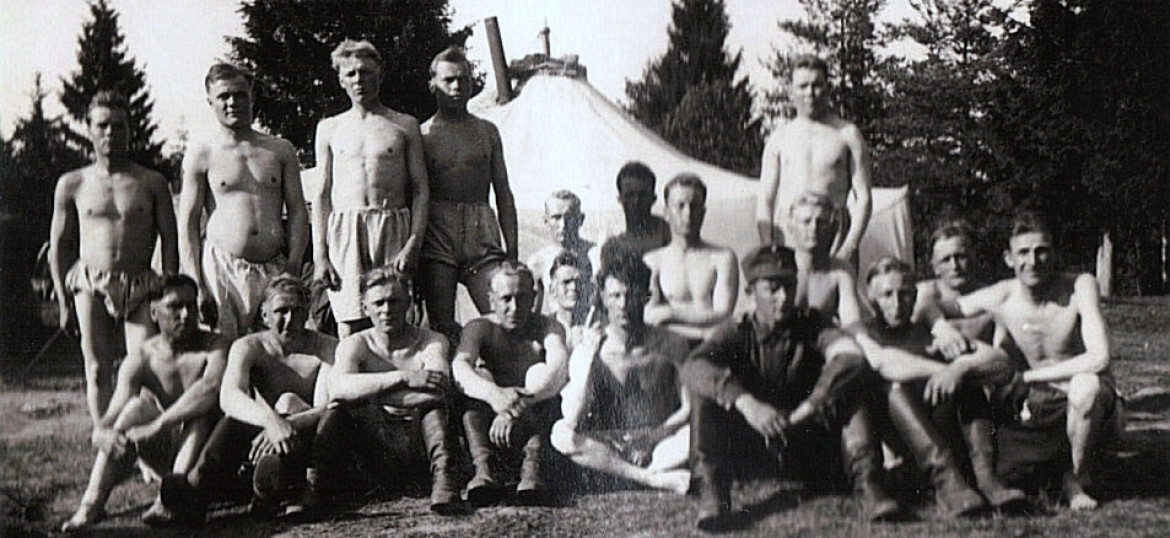Historical and contemporary Finnish people
The demographic transition in Finland took place relatively recently in comparison to the rest of Europe (started late 19th century, but mostly during the early 20th century). Prior to this, Finns were almost exclusively agrarian and lacked most innovations of the modern era (e.g. healthcare improvements and modern birth-control methods) until industrialisation in the latter half of 19th century. During the 18th and 19th centuries infant mortality was high - only ~60% of individuals survived to age 15, similar to modern hunter-gatherers. During the pre-industrialised period, inheritance usually favoured the eldest son, and the predominant household in the western parts of the country contained both (grand)parents and the family of one child. Other siblings usually lived close by. The residence system was different in the Eastern Karelian study areas, with several married sons co-residing with their parents. Such patterns gradually shifted from 1880s onwards. The whole population was Lutheran, and from 1749 onwards, local clergymen were required by law to take accurate censuses of births, movements, marriages and deaths of each parish in the country. Finland is one of the few countries worldwide for which there are complete population registers dating from the pre-industrial era. In addition, there are several Finnish register officials that provide information on the lives of contemporary Finnish people.
Human life-history database
This is a large multi-generational demographic dataset following the same family lineages from preindustrial to modern Finland (individuals born 1730-2022). The dataset contains accurate information on people living in Finland and all their descendants (N = approx. 100,000 people), including e.g. all births, deaths, marriages, places of residence, causes of death and occupations. The life-history data can be combined with information on local demography, year-to-year weather conditions, war and disease outbreaks, famines and annual crop yields. The data has been collected by professional genealogists from several sources (e.g. parish registers, family studies).
From the multi-generational demographic dataset, persons who have lived until the establishment of the population information system in Finland (up to 1971), or after, were separated. These persons were identified in the service of the Digital and Population Data Services Agency (N ~ 22 000). The Digital and Data Services Agency provided information on all family relationships (parents, children, siblings) for the individuals, their residence places and all marriages (including spouses). This data complements the life-history information of contemporary Finnish people in our database.
MiKARELIA database
MiKARELIA database consists of live events of 160,000 Karelian war evacuees displaced during WW2 due to loss of territory and resettled elsewhere, some individually, and others with the resettlement of entire evacuated villages to new areas, thus maintaining old social bonds. The evacuees were interviewed in 1968-69 for Siirtokarjalaisten tie book series, which includes records on birth, death, marriage, family, occupation, participation in a paramilitary organisation, membership in cultural organizations, religiosity, political affiliation, union membership and complete settlement history prior to the war and up until 1970 (Loehr et al. 2017). These have been digitalized (see https://www.helsinki.fi/en/projects/learning-from-our-past/data) and combined with 1) digitized records of Karelian church books that span 1700-1949 to provide us with family information/ a pedigree for a large proportion of the individuals in the MiKARELIA database and the other evacuees not interviewed in the 1960’s; and 2) records available from the population register center of Finland and Statistics Finland which provide us information on evacuees’ mother tongue, movement history, inco me, employment, education, socio-economic group, marital status and cause and date of death after 1970.

